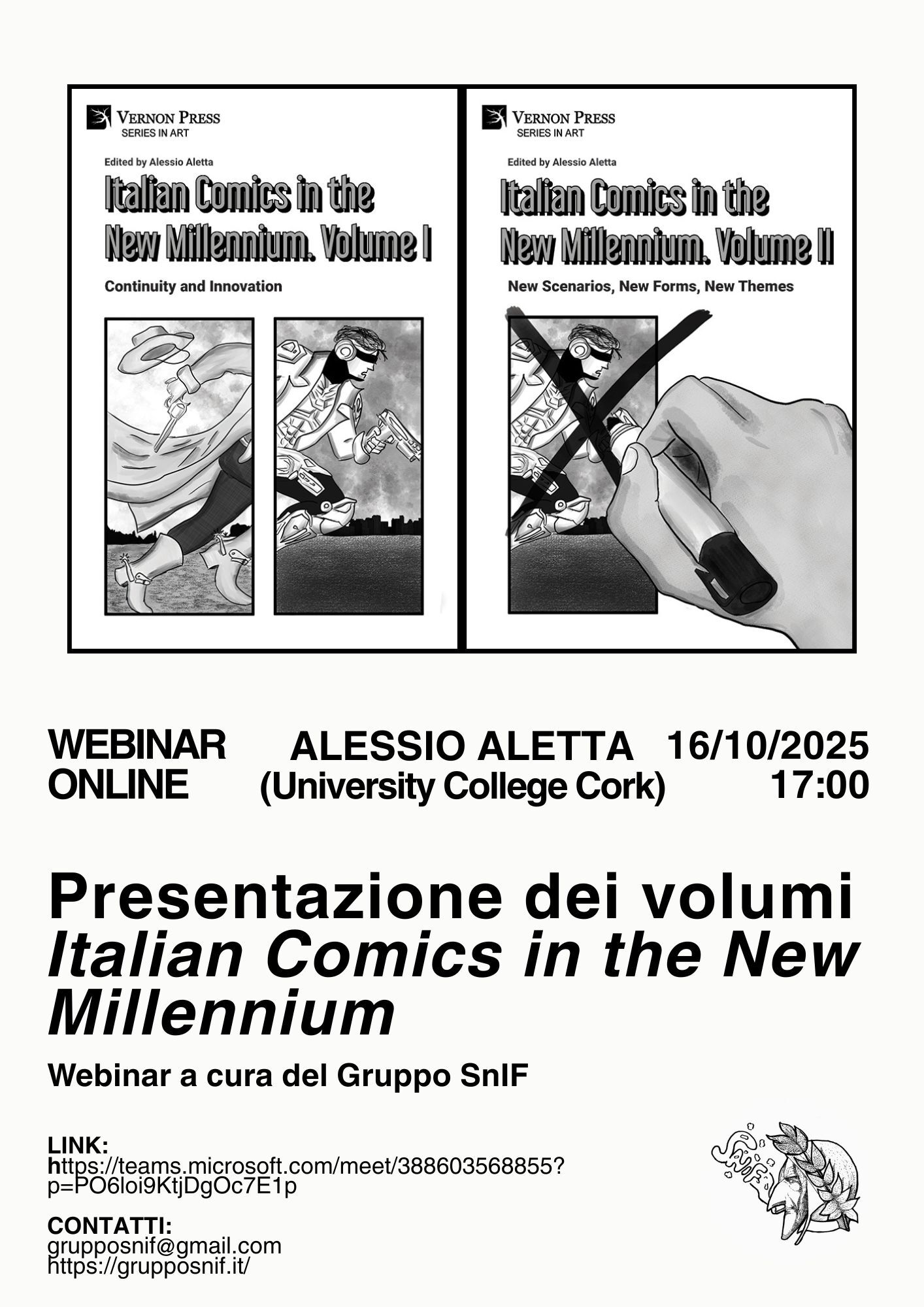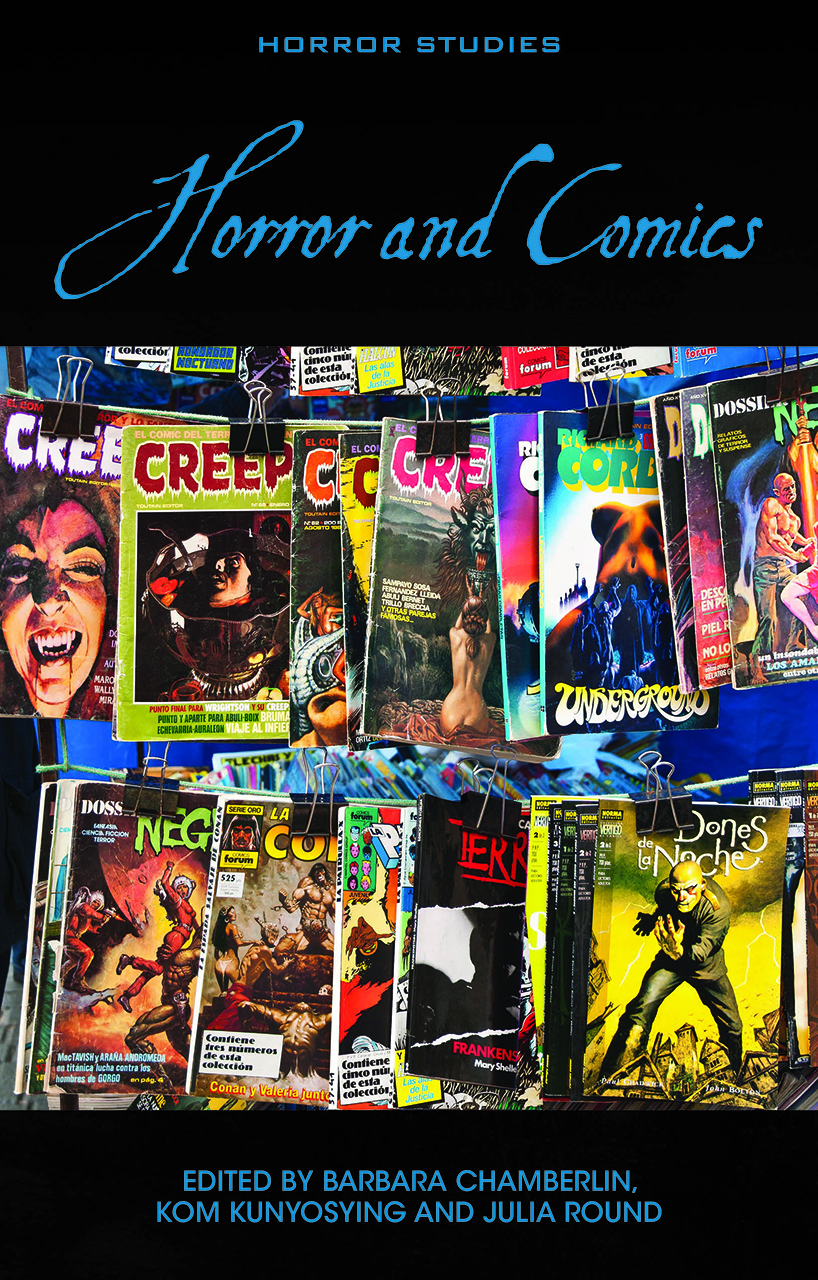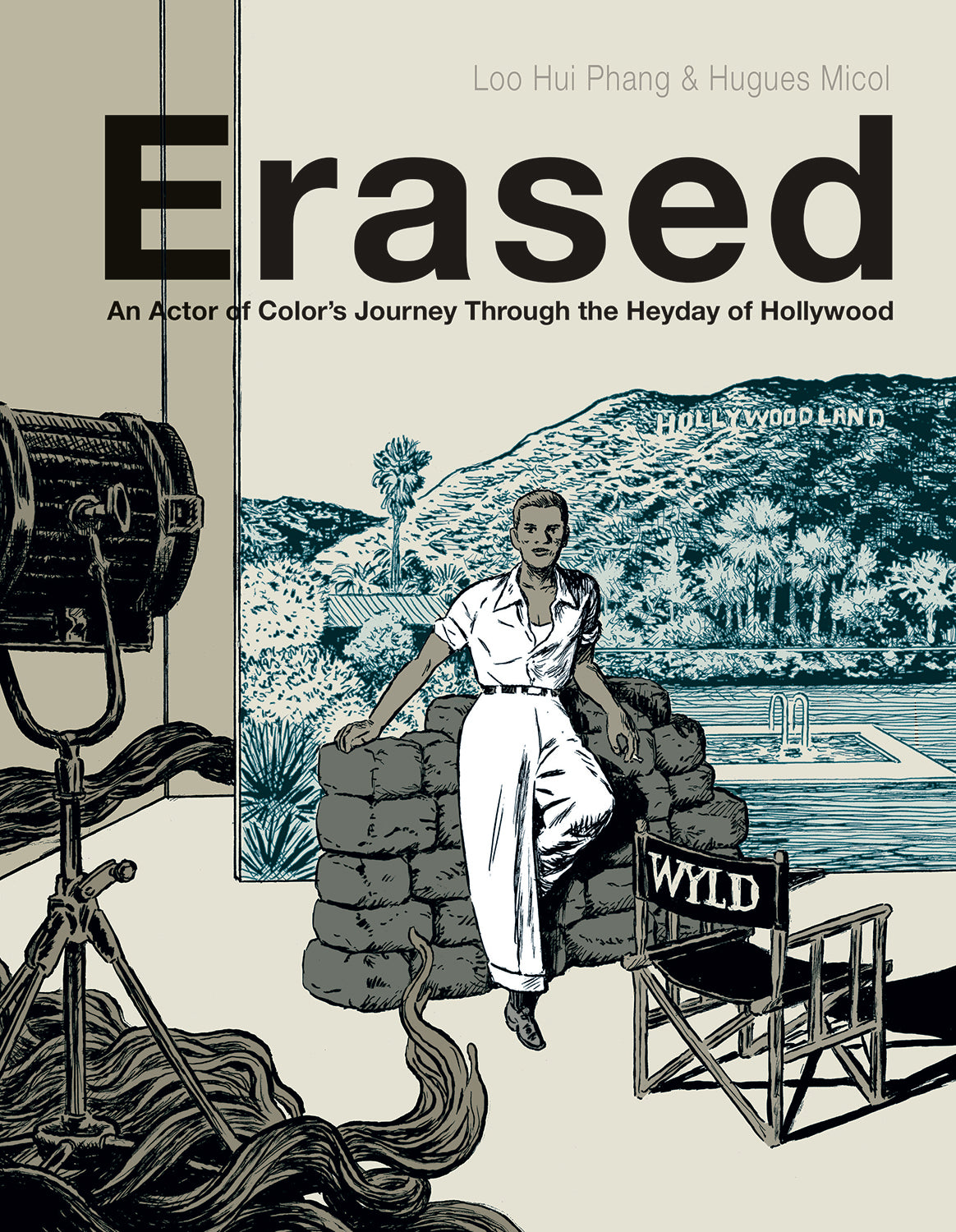reviewed by Matthew Teutsch, Associate Professor, Piedmont University
Loo Hui Phang and Hugues Micol. Erased: An Actor of Color’s Journey Through the Heyday of Hollywood. New York: NBM Publishing, 2024. 200 pp. US $24.99 (Hardcover). ISBN: 978-1-6811-2338-7. https://nbmpub.com/products/erased
Who
was Maximus Ohanzee Wildhorse, an “actor with a thousand faces”? Why, decades
after his heyday in some of the biggest films of the 20th Century,
from “Gone With the Wind” to “The Maltese Falcon” to “Vertigo” and
beyond, do we not know about Wyld’s legacy during some of the most important
moments in cinematic history and in the history of the United States and the
world? Loo Hui Phang and Hugues Micol’s Erased: An Actor of Color’s Journey Through the Heyday
of Hollywood seeks to rectify the fact that Wyld’s work, once the House
Un-American Activities Committee (HUAC) deemed him a Communist, because he went
to Kyrgyzstan in 1955 to portray Genghis Khan in a film by Aktan Okeev, vanished
from the studio vaults. As a result of the HUAC investigation, film studios
blacklisted Wyld, and “to safeguard the integrity of their back catalog and
contribute patriotically to the Cold War effort, studios decreed radical
edits,” essentially erasing Wyld from the annals of cinematic history.
In
the afterword, Lelan Cheuk notes that as he read Erased, he placed
Maximus “alongside Anna May Wong, Paul Robeson, Lena Horne, James Hong, and
countless other talented performers relegated to a career of supporting roles
drenched in racial stereotypes.” Because of his Black, Chinese, and Indigenous
ancestry, Maximus could veritably play any “ethnic” role on screen, portraying
enslaved individuals, Indigenous chiefs, Mexican revolutionaries, Oriental
dandies, and more. Yet, with all of the promises from Louis B. Mayer to make
Maximus the first Black star to be at MGM, telling him again and again that he
planned to have Maximus star in a film adaptation of Othello that never
materialized.
While
Erased resurrects Maximus from the depths of oblivion, it also serves as
a commentary on the role that celluloid images have on our culture, and the
ways that cinema allows us to escape reality, but also informs our reality. After
Cary Grant “discovers” Maximus in a gym, we see Maximus in a theater watching a
western with Father Magnani. Micol’s first panel shows a white cowboy chasing
two Indigenous warriors as he shoots at them. In the foreground, we see a boy’s
fist raised in the air as he yells, “Yippee! Whip’em good, redskins!” Father
Magnani tells the boy to settle down and reminds him, “it’s just a movie.”
Maximus pushes back, telling the priest that what they see on the screen is not
just a movie, and that when he watches the action, he “want[s] to be a cowboy,
not an Indian.” This feeling is what Franz Fanon and James Baldwin write about
in relation to seeing oneself on screen as the “savage” or the “uncivilized,”
and thus rooting for the white hero. Baldwin writes, “It comes as a great shock
to see Gary Cooper killing off the Indians, and although you are rooting for
Gary Cooper, that the Indians are you.”
Father
Magnani tells Maximus that images and narrative have power and that, “[t]he
cinema is but an adaptable tool.... It can be made to serve any ideology.”
Still looking at the screen, Maximus replies, “Me, I just want the Indians to
win.” Maximus takes Father Magnani’s advice, and he imbues his acting,
specifically after the initiation of the Hays Code in 1934, with subtle
gestures and signs that subvert the code. As well, he incorporated gestures and
wardrobe choices to convey “secret messages,” such as references to African
roots, Toussaint L’Ouverture’s initials in a movement, a raised fist in
defiance, and more.
While
the dialogue and textual narrative convey the illusion of cinema and Hollywood,
Micol’s surrealist illustrations, which bring to mind the work of Bryan Talbot’s
work in Armed with Madness: The
Surreal Leonora Carrington, work with Phang’s text to create an uneasy
feeling of reality. Erased opens with seven out of the first eight pages
being full-sized illustrations without panels. The opening page depicts a
masked figure walking in the desert amidst images of various characters that
Maximus plays throughout his career. These characters are ensconced as parts of
a cactus, as bearing the weight of the scene, and as traversing the landscape
as the narrator begins, “Hollywood is fiction, and like all fictions, it is
myriad, changing, sincere, deceitful and unbridled engine of predatory
fluidity.” It changes and morphs, relaying ideologies, as Father Magnani puts
it. The next page continues to follow the masked figure as an eagle snatches
the individual up in its claws, depositing the person into a seemingly
bottomless cavern that reveals itself, on the third page, to be a woman’s head.
Thus, the malleable, masked thespian becomes part and parcel of the audience
member’s consciousness. The narrator reiterates, “Hollywood is a fiction. It
feeds on stories. Manufactures heroes. Celebrates them. Torches them.” These
“heroes” all become part of us as audience members, and the masked person, as
they fall into the black hole of the woman’s hair, gets lost to the march of
time, becoming one of the torched heroes.
When
Maximus faces HUAC about his involvement with Okeev’s “Genghis Khan,” they
torch him, turning him from a celebrated hero to a mere shadow haunting the
edge of the frame. Micol’s depiction of this moment harkens back to the
opening, placing the masked individual on a pyre, surrounded by burning film
reels as the flames lick at the flesh while the head of a bald eagle stares at
the audience in the lower right corner from behind the lynching. The image
symbolically depicts Maximus’ erasure from the annals of cinematic history,
burned alive by the very film reels that he made popular. The studios sought to
protect themselves from HUAC, and “Maximus Wyld became an evil infecting
Hollywood--one it was urgent to eradicate.”
Erased,
at its core, does more than just resurrect Maximus Wyld’s career. Through the
narrative and illustrations, it highlights the myths we tell and the ways that
those myths, depicted on larger-than-life screens, impact our very beings. It
dives into the illusion, even with actresses, such as Margarita Carmen Cansino
(Rita Hayworth) and Julian Jean Turner (Lana Turner), that Hollywood creates,
the shifting of identity and story. It dives into the history of racism in the
United States, the censorship of media, the attacks on LGBTQ individuals, and
more. While recovering Maximus’ story, Erased provides an
all-encompassing history of Hollywood, early Black cinema, the United States,
and the world from the 1930s through McCarthyism.
Ultimately,
though, Erased itself is nothing more than an illusion, because Maximus
Wyld never existed. As I read Erased, I kept wanting to look up and find
more information about Maximus. I put the book down and searched for Maximus
online, to no avail. I thought to myself, “Is Erased the only evidence
of Maximus? Is it the only document of his life and work?” The answer to both
questions, in the factual sense, is “No.” Maximus never “actually” existed, but
now, through Phang and Micol’s work, he does exist as part of cinematic
history, as a sign to the erased individuals of Hollywood’s “golden” age. While
Cheuk and I both felt, during our initial reads, that Erased told the
story of someone who lived and starred in these films, we came to the
realization that Erased is fictional, but we each, as well, recognize
the ways that Maximus’ story tells that while progress has been made, “there’s
still a long way to go,” as Cheuk writes, “before actors of color are the
heroes and antiheroes in our collective racial imagination.”



















